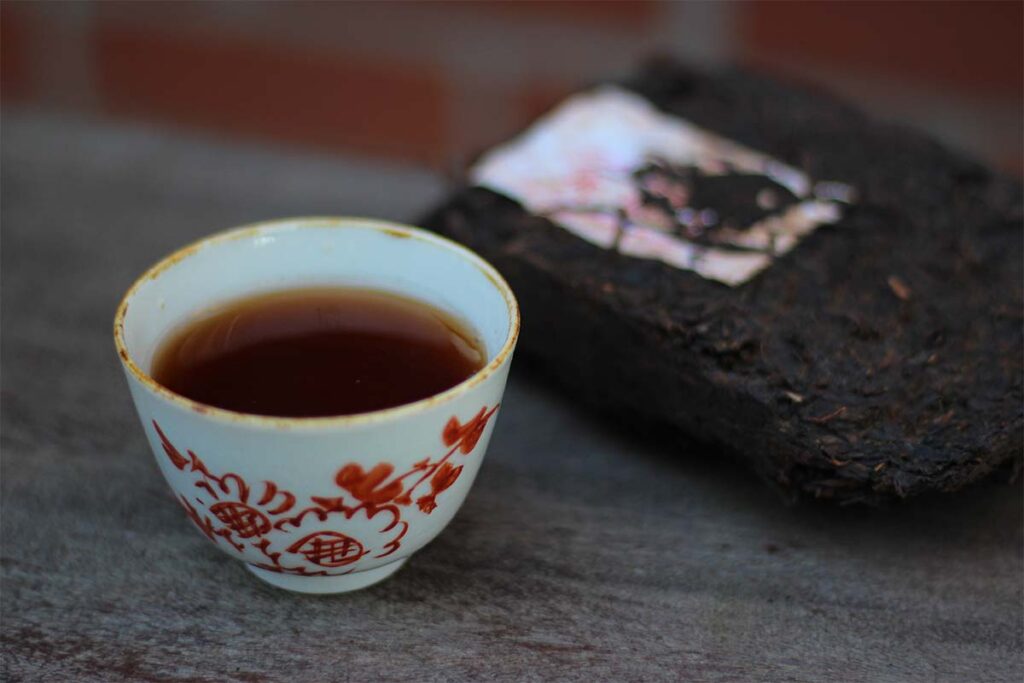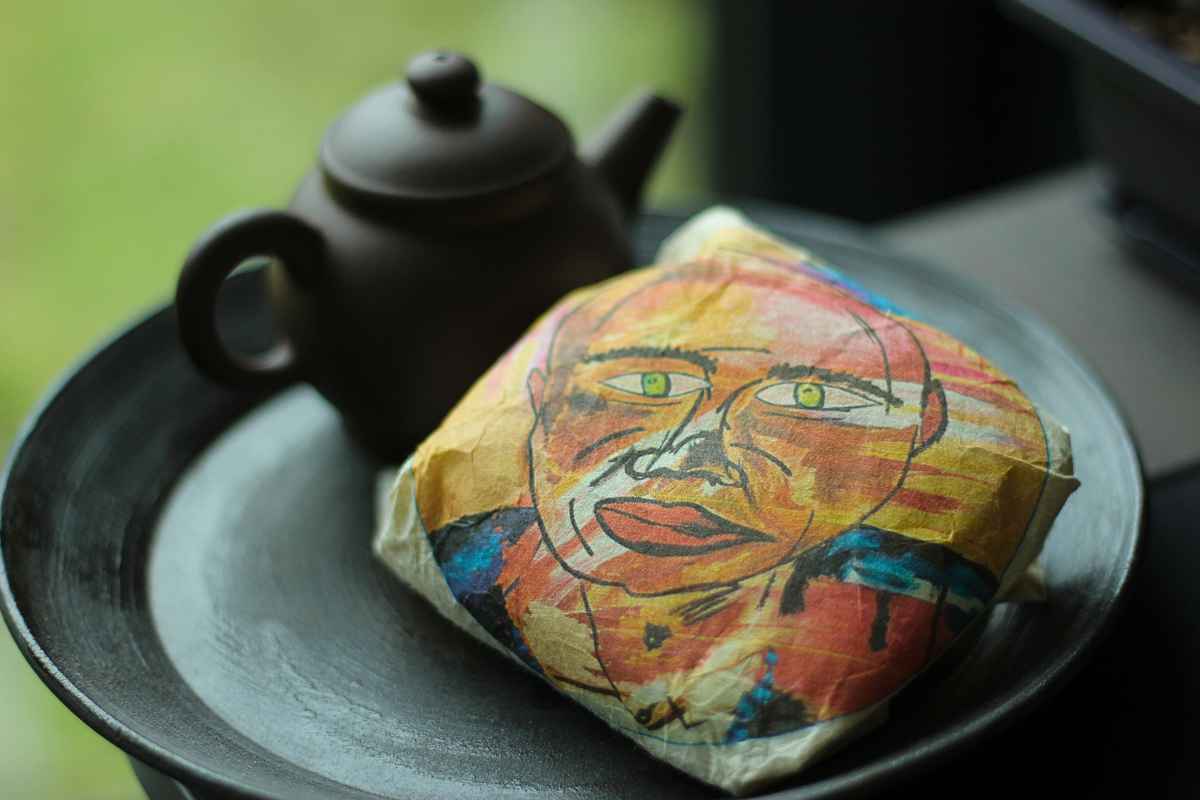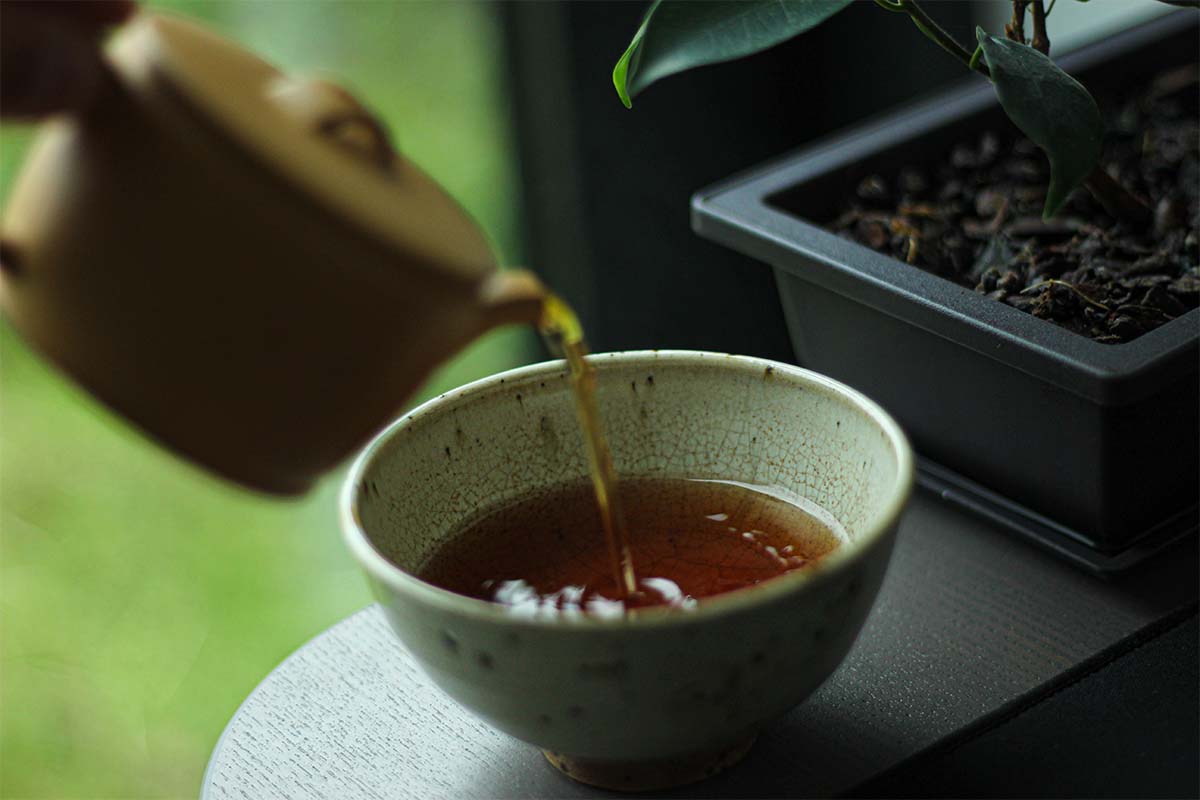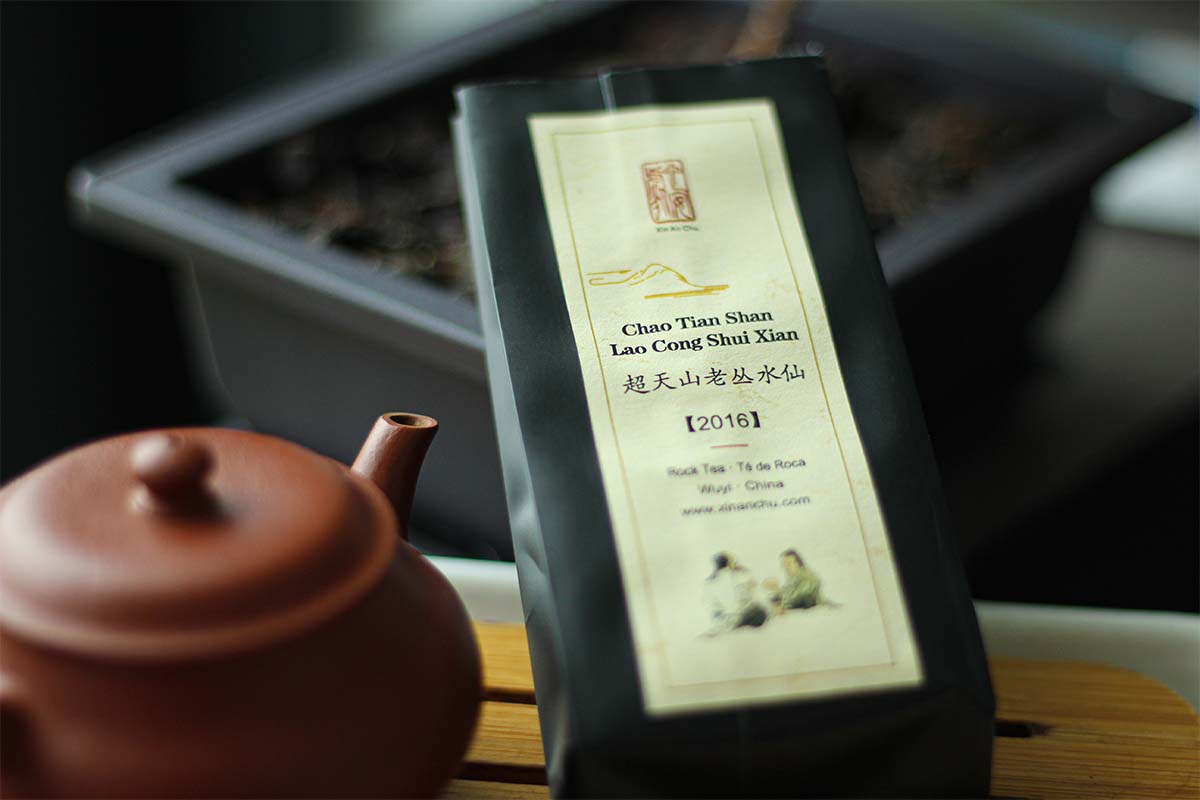A common misconception in the west is using the term ‘black tea’ to talk about fully-oxidized tea that is not fermented. However, this is not the correct term for this type of tea. An example of black/dark tea is aged puerh tea or shu puerh tea because these teas are fermented.
So the nice cup of dark English breakfast tea is not black tea? But what is it then?
Black tea, dark tea, puerh tea, and red tea are all terms that are frequently used to talk about tea. What do these terms mean and when should you use them? This article offers a complete overview of the difference between black tea, puerh tea, red tea, and dark tea.
The difference between black tea and puerh tea lies in the different production processes. Puerh tea is sun-dried, while that is not the case for (most) black/red tea. This is why there is some moisture left in puerh leaves and is the main reason puerh tea slowly ferments over time. This is not the case in black/red tea because once it’s finished, it doesn’t change that much.
What is black/red tea?
Red tea is a type of tea that is picked, withered to reduce moisture in the leaves, rolled, oxidized, and fired. This is a basic description of how red tea is made, but most red tea is produced in this way. An example of this type of tea is lapsang souchong.

Don’t know where to buy tea online? I made a list of over 300 online tea shops and I keep updating it regularly. You can check it over here
In the west, we refer to this type of tea as black tea because of the color of the leaves. However, this can lead to misunderstandings because black tea is a completely different type of tea, as you can read below.
In Asia, people call this type of tea red tea (or hong cha) due to the color of the liquor.
What is black/dark tea?
Black/dark tea is a type of tea that has gone through any form of fermentation. It’s possible that the tea has been through artificial fermentation like shu puerh and Liu Bao. Fermentation can also occur naturally over time as is the case in aged sheng puerh.

It has a strong and earthy flavor, which makes it perfect for those who like their tea to taste more like coffee. This type of tea originated in China but can be found in other parts of Asia as well.
In Asia, this type of tea is called ‘heicha’ and translates as dark/black tea. In the west, this can lead to misunderstandings because we usually use black tea to refer to red tea (hong cha).
To solve this issue and avoid any misunderstandings, people in Asia look at the color of the liquor and not at the color of the leaves. This resulted in a difference between red tea and black tea. For the sake of clarity, I will use heicha to refer to the fermented type of tea.
Puerh tea
Puerh tea is the most famous example of heicha for various reasons and comes from China’s Yunnan Province. Shu puerh is cooked puerh that goes through artificial fermentation during production and is a good example of heicha.

Aged sheng puerh has gone through fermentation as well, but it isn’t done during production. Aged sheng puerh slowly ferments over time because of the bacteria and fungi in and on the tea leaves.
Young sheng puerh hasn’t undergone any fermentation yet, so it doesn’t have the same characteristics as other heicha. However, for simplicity, young sheng puerh is also considered an example of heicha.

Difference between black tea and puerh tea
For the sake of clarity, I will focus on the difference between black/red tea and puerh tea.
Black/red teas are made from the leaves of the Camellia Sinensis plant. These leaves are picked, withered, rolled, oxidized, and fired. This results in black tea leaves that produce a reddish (and sometimes orange) liquor.
Puerh tea (cooked, aged raw, and young raw) is an example of heicha because these teas go through any form of fermentation. Fermentation is one of the reasons the tea liquor is darker than red/black tea. This implies that heavy fermentation produces darker liquor.


Leaves for puerh tea are processed in a similar way to black/red tea, but there are some slight differences that set these two types of tea apart.
In puerh tea, leaves are withered for a shorter time, roasted in a pan, rolled, and sun-dried. Sun-drying is a crucial step in the production process of puerh tea because this leaves some moisture in the leaves.
The moisture that is left in the leaves is the reason raw puerh tea slowly ferments over time. This allows for slow oxidation/fermentation over the course of years/decades.


Red/black tea on the other hand doesn’t change that much anymore because after drying, the production process is more or less finished.




